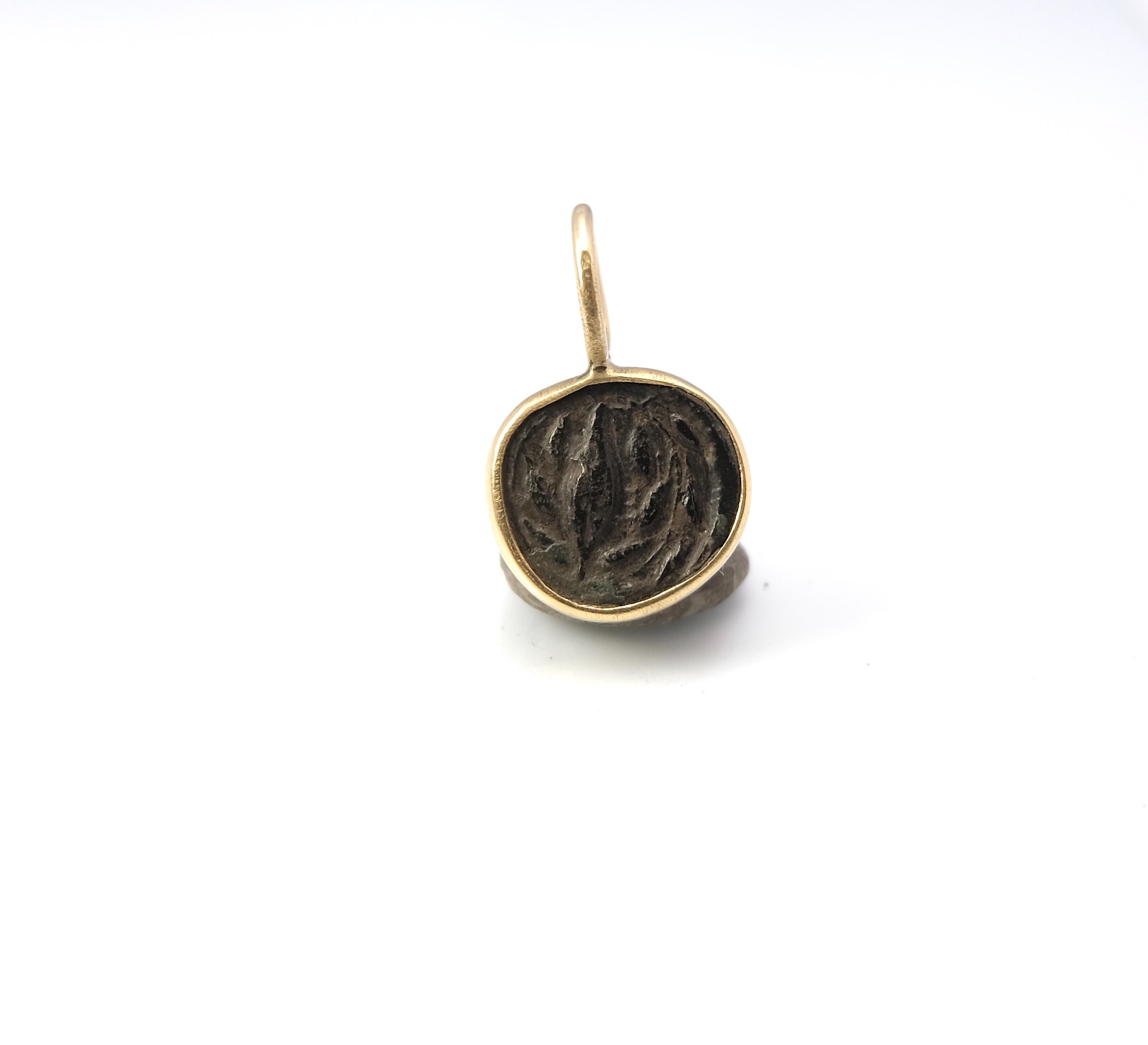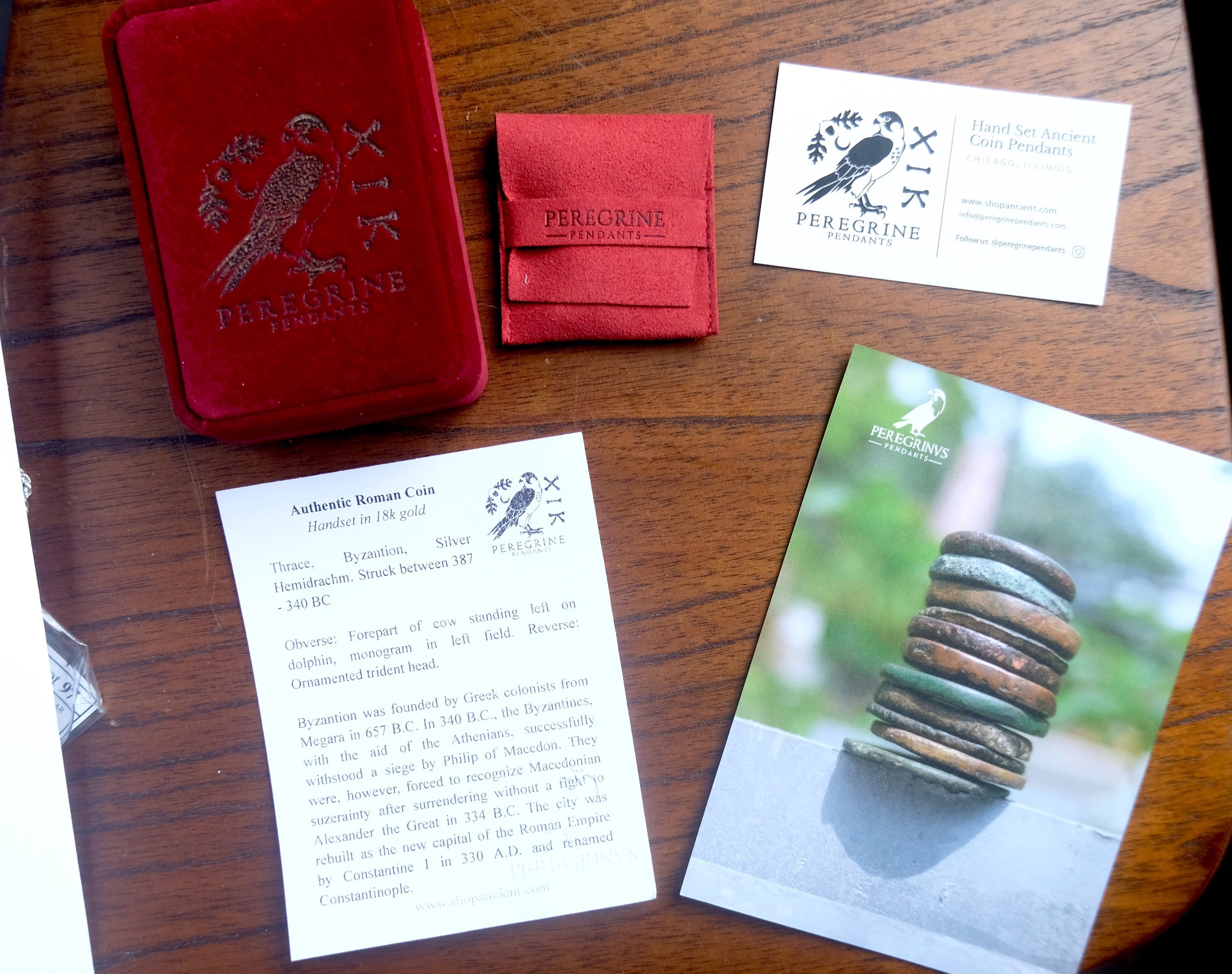 Image 1 of 4
Image 1 of 4

 Image 2 of 4
Image 2 of 4

 Image 3 of 4
Image 3 of 4

 Image 4 of 4
Image 4 of 4





Medusa, Gorgon - Mysia 5th Century BC - Set in 22k gold
Super cool, very subtle face on the obverse. Reverse shows a an interesting patterns. Notice the details present on the coin, the details around the little cracks on the coin.
To appreciate the pendant's size, the relief of the coin and the shape of the bail, see the picture showing the coin next to a US quarter (will post soon). The coin was first set in a gold bezel, which was then hammered over the edge of both sides. This was then sanded and polished. This pendant is built to last.
-- Coin information:
Parion, Mysia - silver drachm
Obverse: facing gorgoneion with protruding tongue
Reverse: disorganized linear pattern within incuse square.
Struck 5th century BC
Super cool, very subtle face on the obverse. Reverse shows a an interesting patterns. Notice the details present on the coin, the details around the little cracks on the coin.
To appreciate the pendant's size, the relief of the coin and the shape of the bail, see the picture showing the coin next to a US quarter (will post soon). The coin was first set in a gold bezel, which was then hammered over the edge of both sides. This was then sanded and polished. This pendant is built to last.
-- Coin information:
Parion, Mysia - silver drachm
Obverse: facing gorgoneion with protruding tongue
Reverse: disorganized linear pattern within incuse square.
Struck 5th century BC
Super cool, very subtle face on the obverse. Reverse shows a an interesting patterns. Notice the details present on the coin, the details around the little cracks on the coin.
To appreciate the pendant's size, the relief of the coin and the shape of the bail, see the picture showing the coin next to a US quarter (will post soon). The coin was first set in a gold bezel, which was then hammered over the edge of both sides. This was then sanded and polished. This pendant is built to last.
-- Coin information:
Parion, Mysia - silver drachm
Obverse: facing gorgoneion with protruding tongue
Reverse: disorganized linear pattern within incuse square.
Struck 5th century BC
You Might Also Like

























